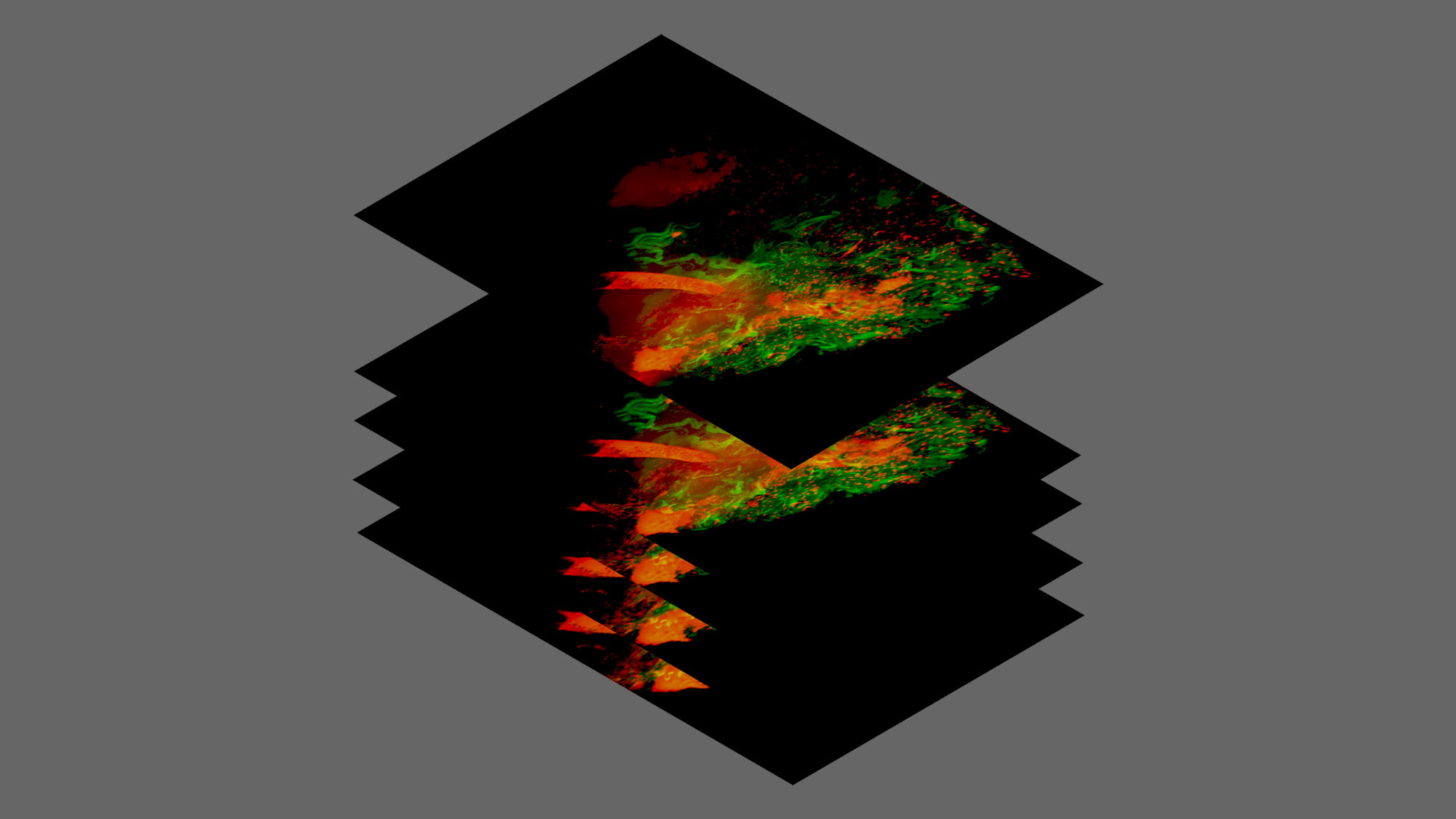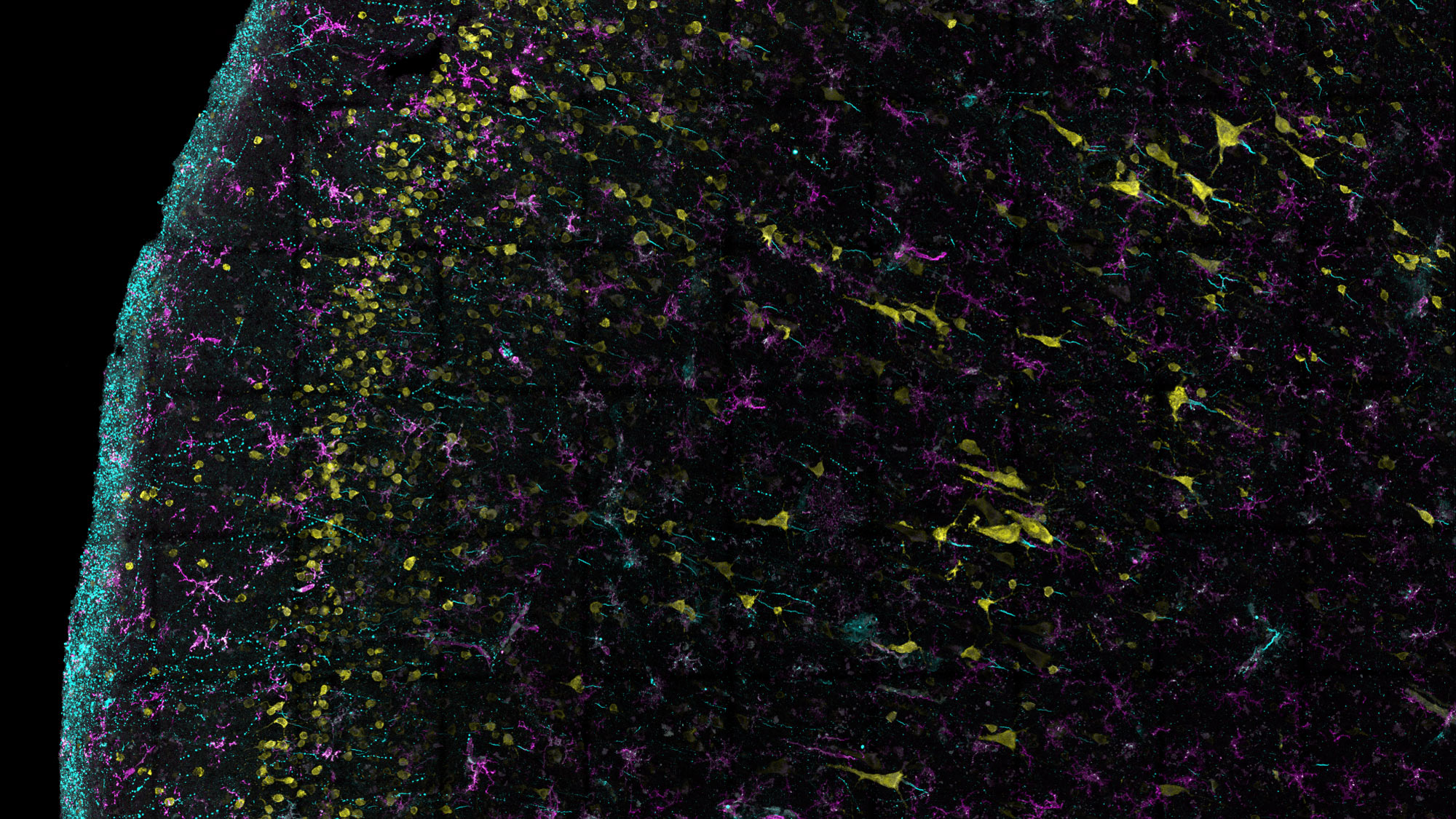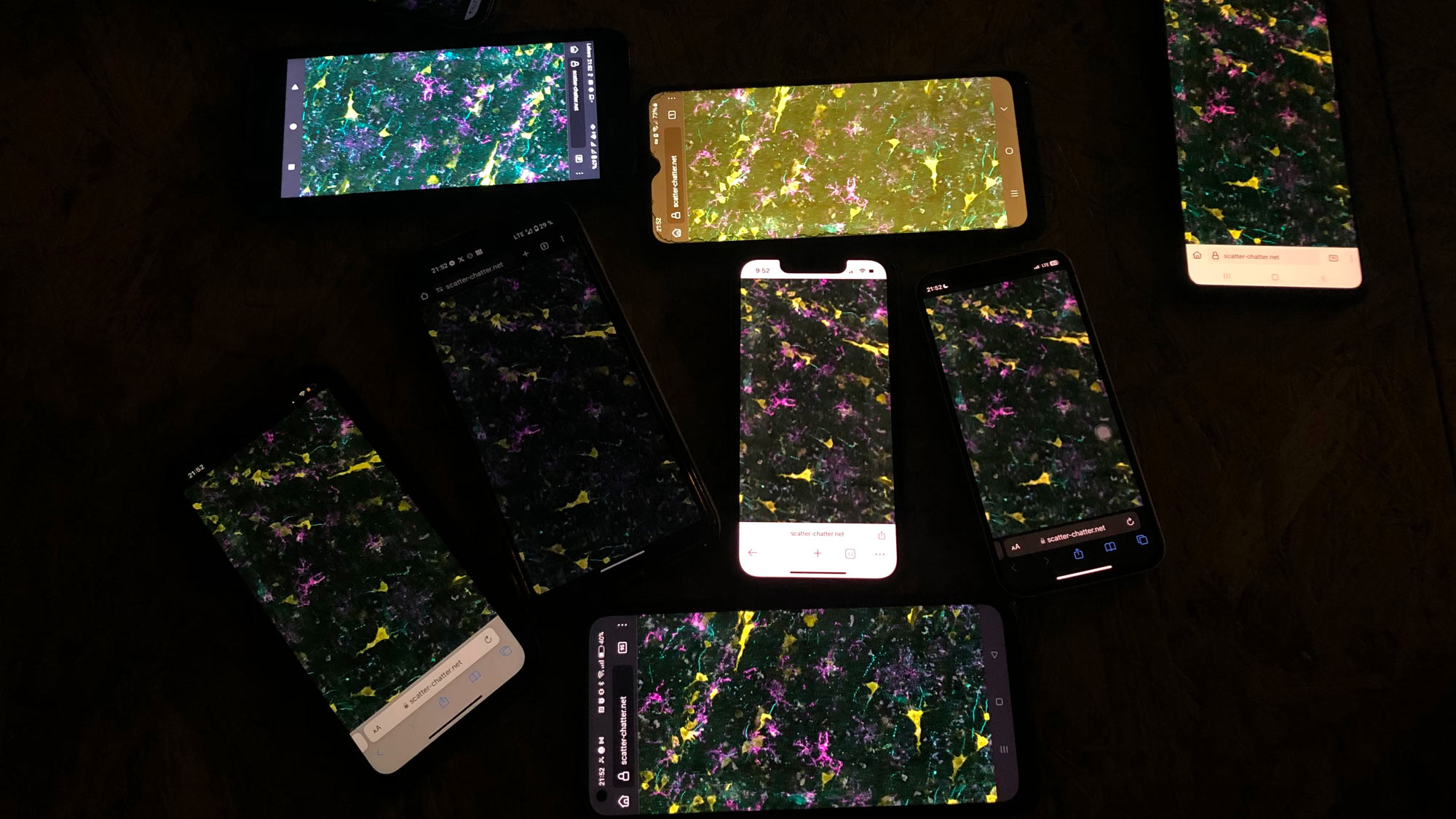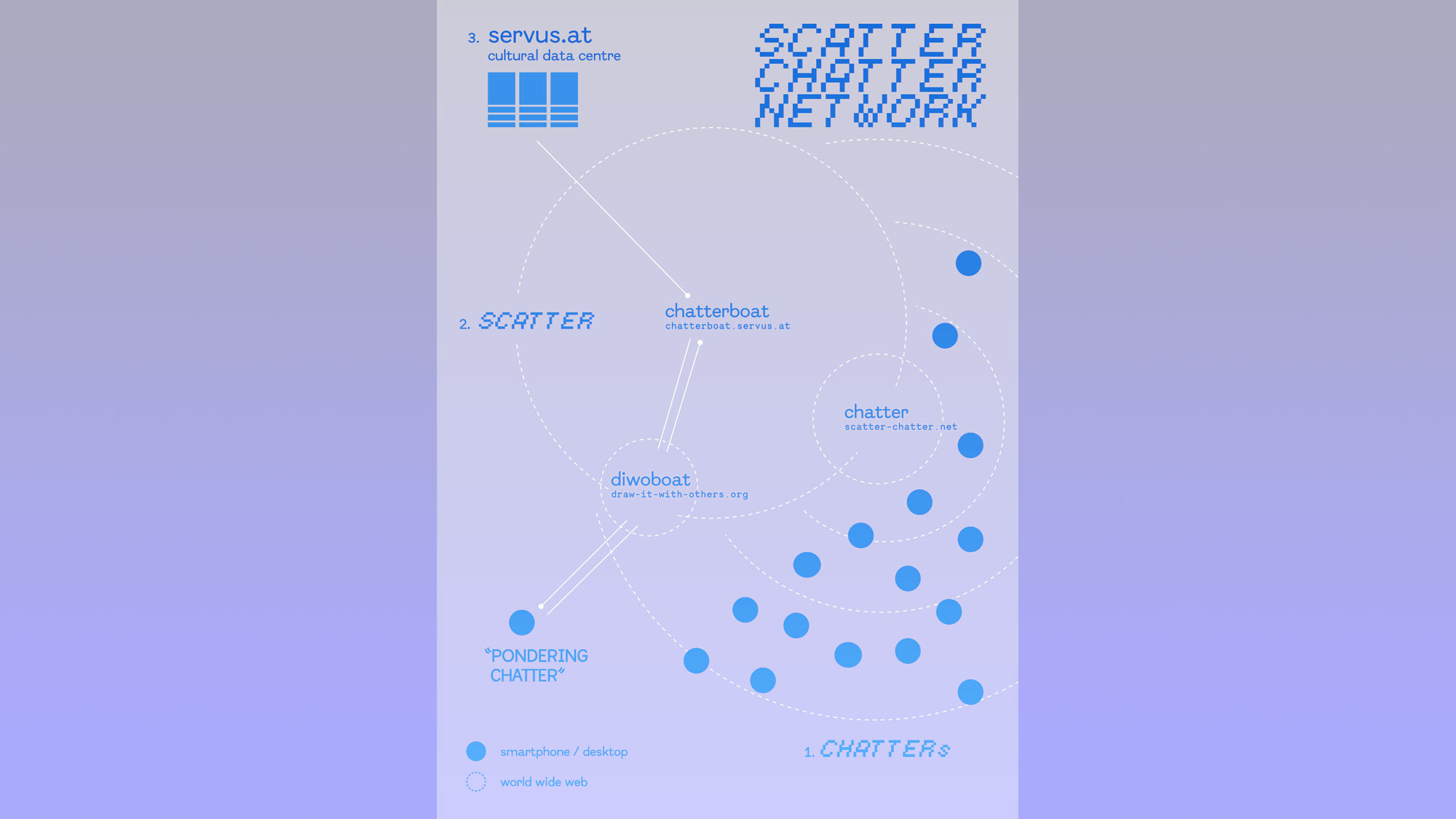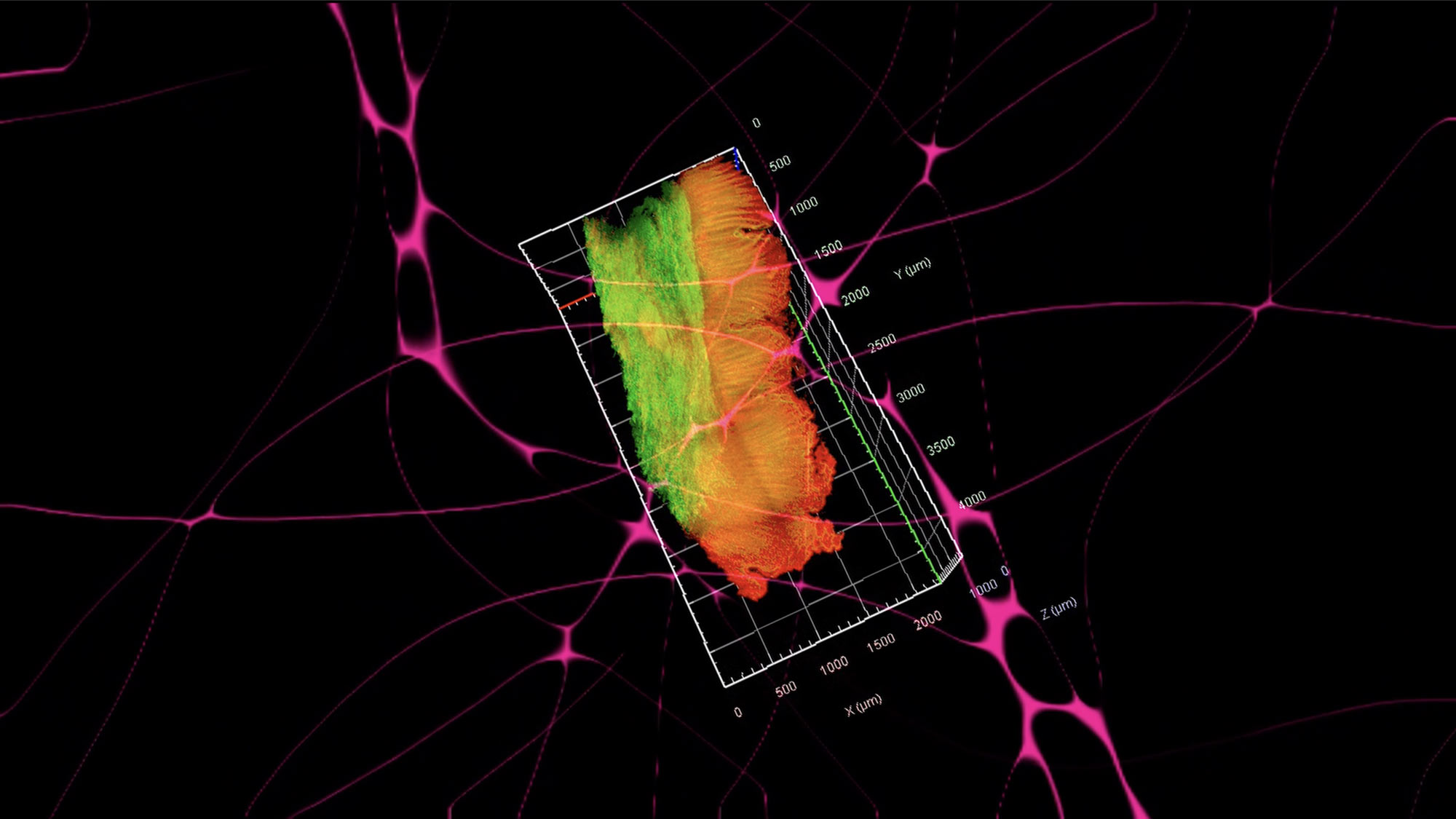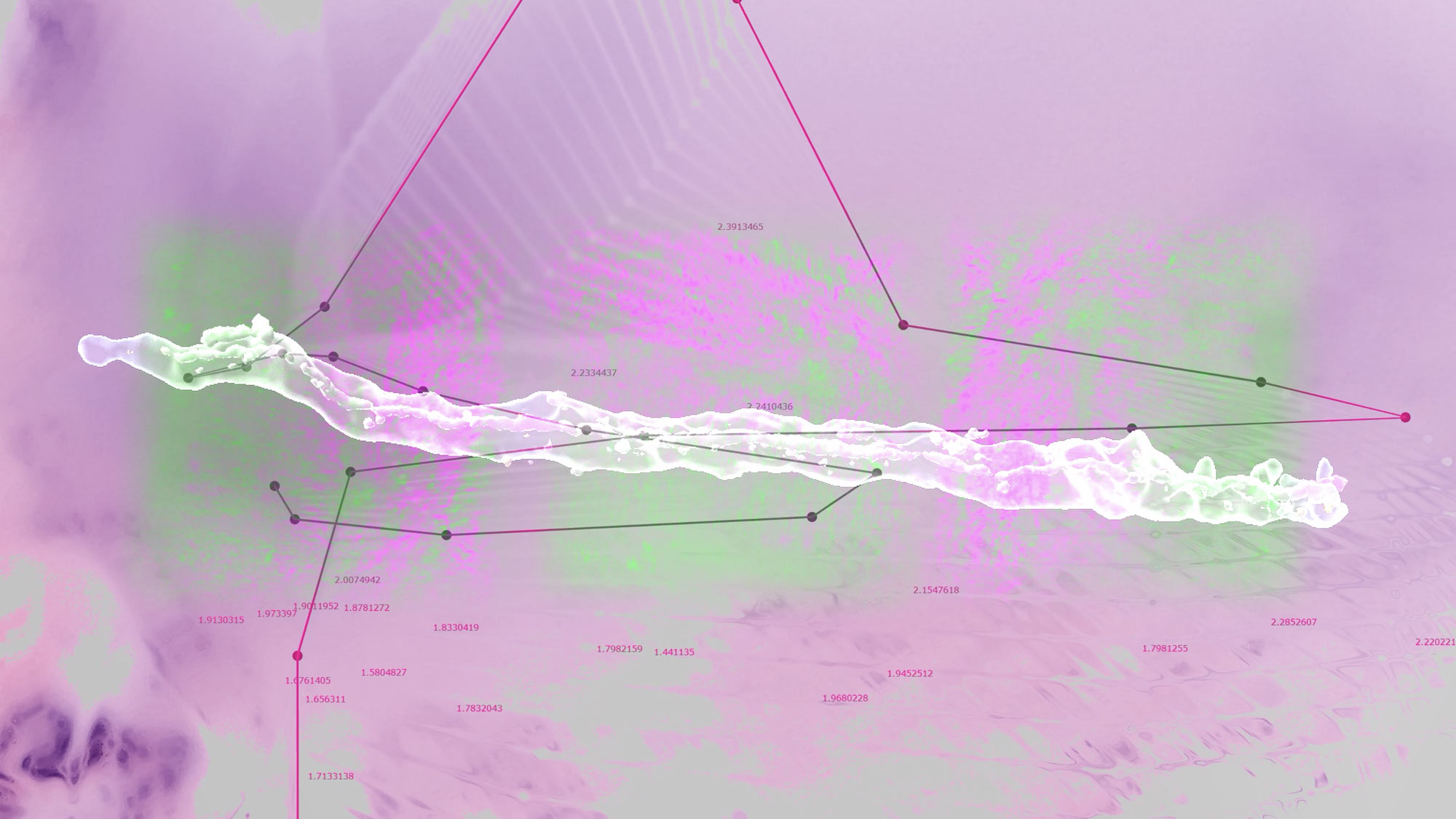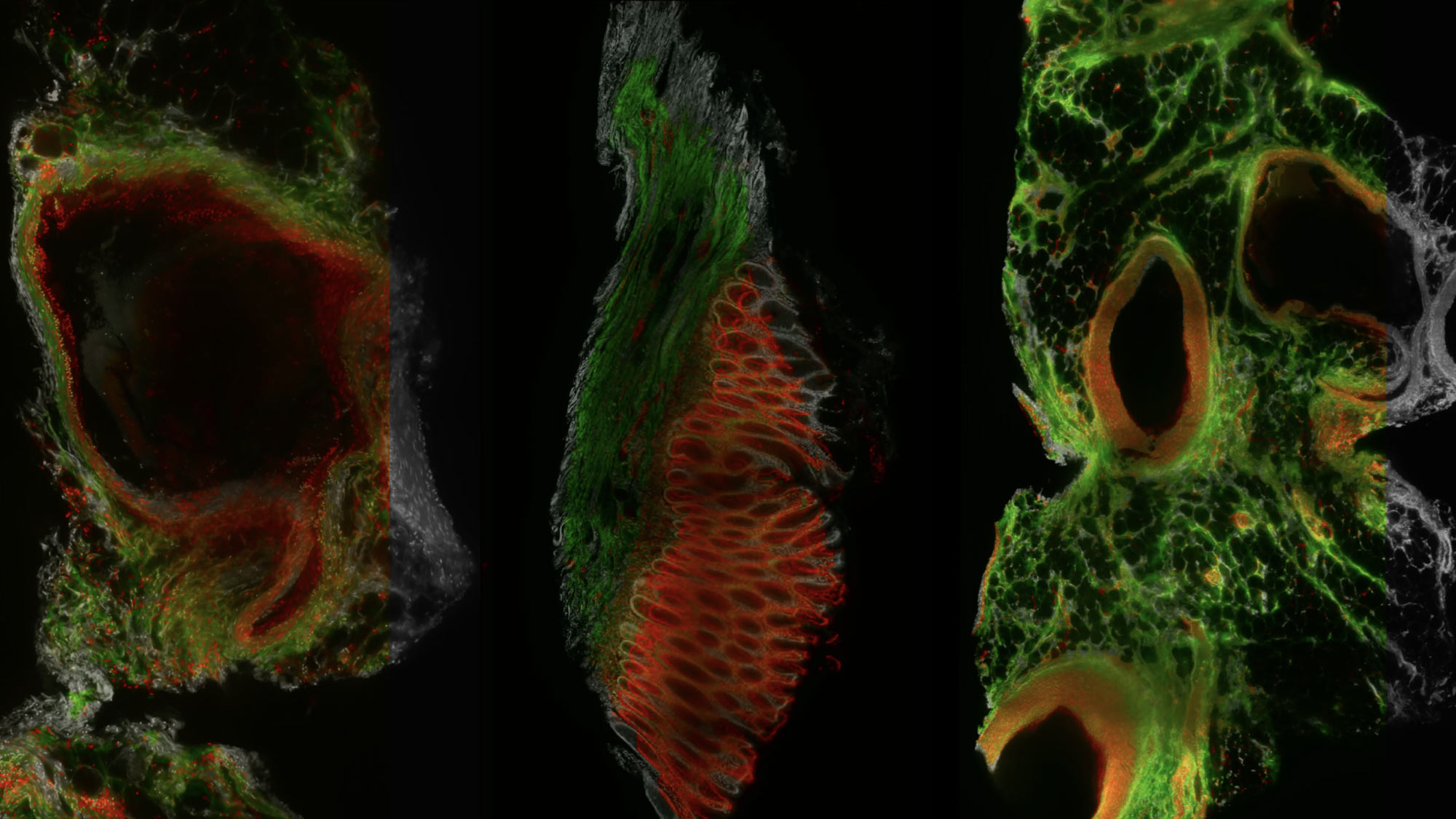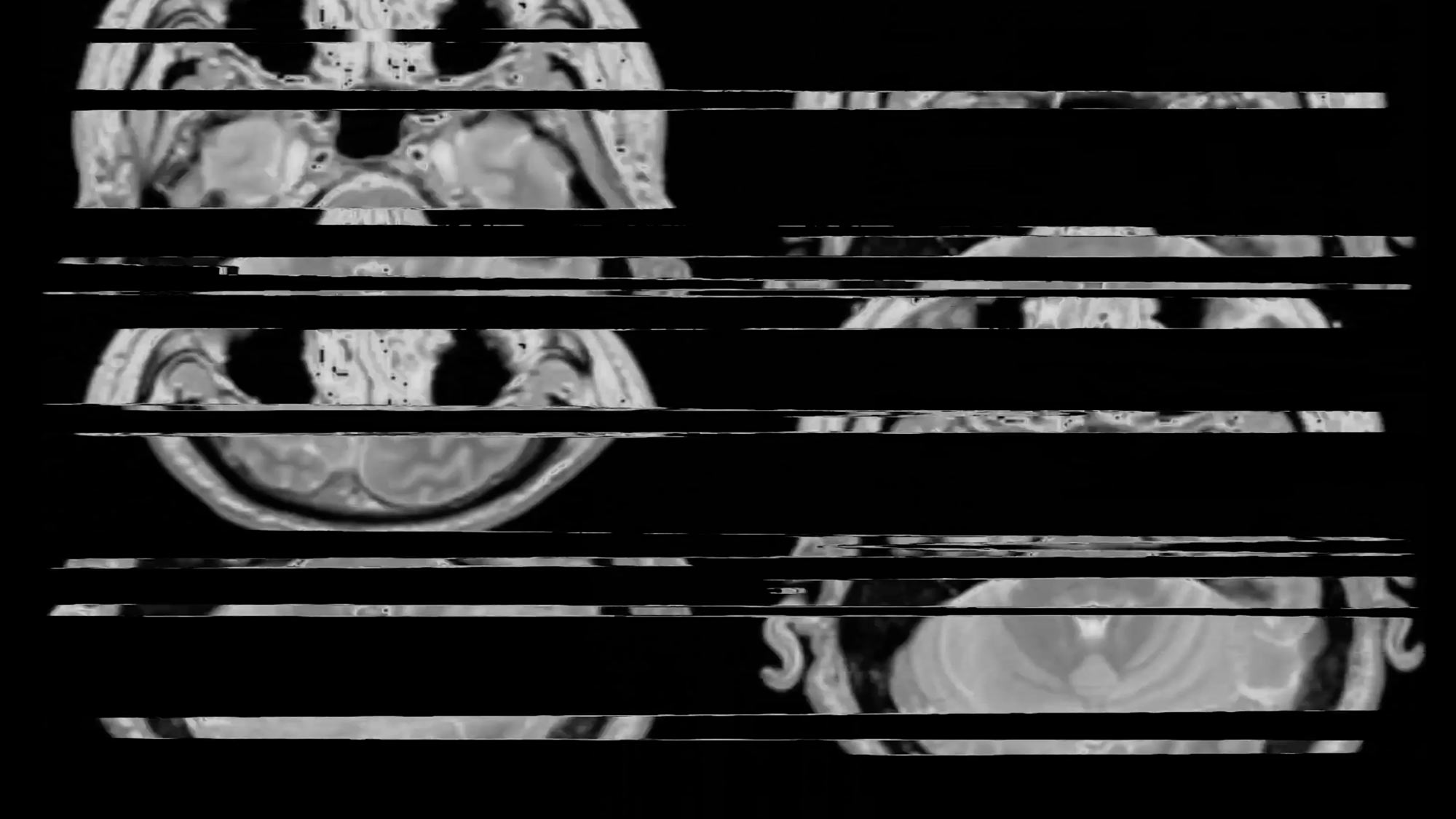By digitally reconstructing tissue samples and rendering spatial data as 3D objects, we offer visitors a unique glimpse into the microscopic world of human anatomy and pathology. Stimulating interdisciplinary dialogue, the exhibition encourages the public to engage with scientific research in new and meaningful ways, highlighting the potential of art and technology to enhance medical education and scientific discovery.
touching thoughts / kicking cancer is a collaboration between the Department of Pathology and Molecular Pathology and the Institute of Anatomy and Cell Biology of the medical faculty of the Johannes Kepler University and the Linz-based network initiative, servus.at.
Situated at the intersection of art, science and digital culture, the project engages with advanced imaging techniques such as light sheet microscopy, confocal microscopy and expansion microscopy. It examines how these techniques are used in the creation of large 3D datasets of neuronal networks and cancer tissues.
Digital artists Błażej Kotowski, jiawen, kamo and Simone C Niquille have been invited to investigate the digital nature of such image-making processes.
The encounter with the artistic research widens scientific protocols by casting light on the conditions and methods through which such images are produced. How does the digital world enable and inform all of this?
Bios
-
 Photo: Sara Pineros Cortes
Photo: Sara Pineros CortesBłażej Kotowski
PL
Błażej Kotowski is a researcher and sound artist whose work lies at the intersection of sound and artificial intelligence. Using a speculative approach, his work explores the epistemic implications of predictive technologies. With special focus on the notion of cyber sublime, he examines the nature of sound, pushing boundaries and challenging traditional notions of sonic experiences. Through diverse means, he creates environments that engage audiences on multiple sensory levels.
-
Chaeyoung Kim & Francesco Luzzana
You are looking at a Venn diagram with the following sets: software, performance, drawing, documentary, birds, drawing again, coloring, hosting, publishing, humor and intimacy. In some of their intersections you read the name Kamo. In others you will see the name Chae. They collaborate under the alias DIWO working group, exploring drawing as an open source practice. They host workshops, develop situated software and participate in different networks with a focus on free and open source technology. Their publications are distributed by the Blob Shop Collective.
-
 Photo: Eva777
Photo: Eva777Eva Maria Dreisiebner
AT
Eva Maria Dreisiebner is a filmmaker, animator and artist based in Linz. She holds a master’s degree in Time-based Media (Art University Linz) and is a former member of art collective qujOchÖ. Dreisiebner has lived in Berlin and Porto and does commission work, including motion design and animation as well as independent art and film projects.
-
 Photo: kamo
Photo: kamoFrancesco Luzzana
IT
You are looking at a Venn diagram with the following sets: software, performance, drawing, documentary, documentation, birds, animals, publishing, Bergamo, “a really specific sense of humor”, many friends, kamo, much money, MA in Experimental Publishing at Piet Zwart Institute, Rotterdam, contemporary dance, BA in New Media at Brera Art Acccademy, Milan, an unquenchable thirst for gossips. In some of their intersections you read the name Francesco Luzzana, in some others not. You guess which ones.
-
 Photo: KUK
Photo: KUKJan Maximilian Janssen
DE
Jan Maximilian Janssen is a group leader at the Institute of Anatomy and Cell Biology at Johannes Kepler University, Linz. He is also a resident doctor at the Department of Otolaryngology / Head-Neck Surgery at Kepler University Hospital, Linz.
After completing his medical studies at Heidelberg University, he joined Maren Engelhardt’s lab at JKU in 2021 and specializes in super-resolution microscopy to study neuronal plasticity and the structural composition of nano domains at the axon initial segment.
-
 Photo: jiawen uffline
Photo: jiawen ufflinejiawen uffline
CN
jiawen exists as a user most of the time in her life. Having little agency as a standard user, both technically and politically, she seeks possibilities of queering the given identity of the user status. Apart from that, jiawen is a researcher-designer based in Bremen, Germany. Her research interest lies in technology’s (counter-)history, materiality, poetics, and politics. She sees leaks as a definite part of the digital reality, and leaking as a method to survive together.
-
 Photo: Petra Moser
Photo: Petra MoserSabina Köfler
AT
Sabina Köfler is a university assistant and research group leader in the Department of Pathology and Molecular Pathology at Johannes Kepler University, Linz. She holds an MSc in Molecular Biology from JKU and the University of Salzburg as well as a Master of Arts in Photography from the Art University of Linz. Her expertise as a tissue researcher includes biomedical image analysis, digital histopathology and AI in pathology.
-
 Photo: technoflesh Studio
Photo: technoflesh StudioSimone C Niquille / technoflesh Studio
CH
Simone C Niquille is a Swiss designer and researcher. Through technoflesh Studio she produces films and writing that investigate computation as the new optics. Her work is concerned with vision technologies, the images they make and the worlds they create – from computer vision, 3D animation, computational photography to synthetic training datasets. Her work advocates for non-binary technology and against machine learning as a tool to validate and instrumentalize assumptions and reduce reality.
-
 Photo: © Sofia Talanti
Photo: © Sofia TalantiSofia Talanti
IT
Sofia Talanti is an Italian digital artist and 3D designer based in Linz, Austria. Their practice is developed through the study of new technologies for manipulation of sculptural forms of digitally conceived objects that always have an impact on reality. In 2018 they graduated in sculpture at the Academy of Fine Arts in Carrara and worked as an assistant for the artist Rob Voerman in the Netherlands. In 2019 they got a master’s degree in Exhibit Design at the Institute for Art and Restoration of Palazzo Spinelli in Florence. They are currently studying in the master’s degree program Interface Cultures at the University of Arts Linz.
Credits
Sabina Köfler, Department of Pathology and Molecular Pathology, JKU Linz / Jan Maximilian Jannsen, Institute of Anatomy and Cell Biology, JKU Linz / Davide Bevilacqua, servus.at – Kunst und Kultur im Netz / Andreas Roschger, FB Chemistry and Physics of Materials, MorphoPhysics Group, University of Salzburg / Serge Weis, Department of Pathology and Molecular Pathology, Neuropathology / Joachim Smetschka, Department of Time-based and Interactive Media, University of Arts Linz
This project is supported by the State of Upper Austria.








